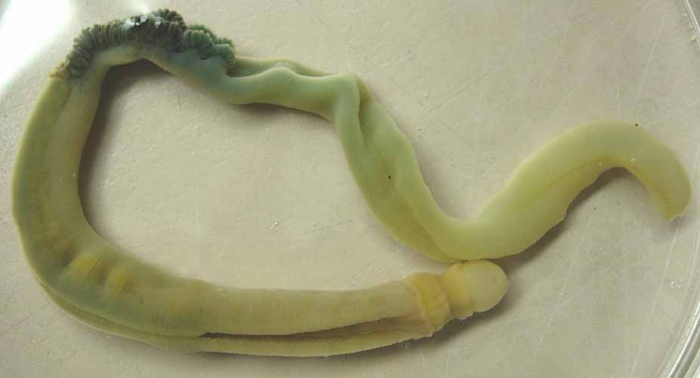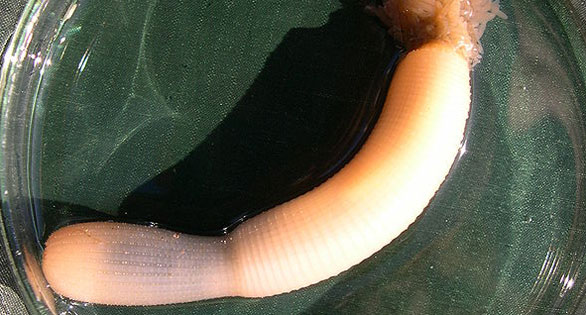Now, that’s all well and good, but I was wondering, while I looked at various of the animals illustrating some of these critters, about the base appearance of some of these critters and their names, both scientific and common. The enteropneusts or acorn worms are so called because the anterior most portion of the worm, called the proboscis, is supposed to bear some superficial resemblance to an acorn. And for some species of these worms, so it does. But these hemichordate worms from certain angles are really very phallic in appearance. And they aren’t the only invertebrates with such a visual attribute, it appears to be a evolutionary solution to the question, “What shape should an animal have to forcing its way through a partially resistant but yielding medium”?
And that brings to mind, names and how they are generated. One of the puzzles I have had about inverts over the years are those animals with the “wonderfully” visually punning names of Priapulids, particularly Priapulus caudatus, the first species and largest priapulid, described by Lamarck in 1816. Although Lamarck has gotten a bad rep because of his ‘inheritance of acquired characteristics’ theory, the rep is really unwarranted. His theory far predated Darwin, and at that time how things were inherited was not known. Lamarck, as a matter fact, coined both the terms, “invertebrate” and “biology”.
Anywho…
Jean Baptiste Lamarck was really the first bona fide Invertebrate Zoologist. He wrote the first book that could be called an Invertebrate Zoology reference/text book and he named a lot of the squishy, creepy, and slithering crawlers, doing mostly an excellent job. Among those worms was Priapulus, the less-or-lesser aptly named “penis worm”.

The penis worm, Priapulus caudatus. This particular specimen was about 50mm (2 inches) long. This species is found throughout the termperate seas. Coral reef priapulids are smaller and live burrowing into the rocks of a reef. Image copyright, Ronald L. Shimek, Ph. D.
Howsoever… Saccoglossan hemicordates aka “enteropneusts” are really much more “penile” in appearance.

The Enteropneust Glossobalanus berkeleyi. Ptychoderan enteropneusts, such as this one, are often fairly abundant in the soft sediments of coral reef lagoons.
Photo from the BJ Swalla collection. Licensed under a Creative Commons Attribution-Noncommercial-Share Alike 3.0 License to the Hemichordata World Data Base

Priapulus caudatus is a predator, of that there should be no doubt when this image of the mouth of the specimen pictured above is examined. Image copyright by Ronald L. Shimek, Ph. D.
Anyhow, I have wondered for many years why the specific worms we now call priapulids got to be priapulids rather than the enteropneustid worms which to my untrained eye look significantly more phallic or priapulidian. The answer in this cas is probably simple, Lamarck saw his worm first.
Of such little mysteries my life has been made.
Some References worth checking out:
Lamarck’s Invertebrate Treatises:
1801. Système des animaux sans vertèbres, ou tableau général des classes, des ordres et des genres de ces animaux; présentant leurs caractères essentiels et leur distribution, d’après la considération de leurs…, Paris, Detreville, VIII: 1–432.
1815–1822. Histoire naturelle des animaux sans vertèbres, présentant les caractères généraux et particuliers de ces animaux…, Tome 1 (1815): 1–462; Tome 2 (1816): 1–568; Tome 3 (1816): 1–586; Tome 4 (1817): 1–603; Tome 5 (1818): 1–612; Tome 6, Pt.1 (1819): 1–343; Tome 6, Pt.2 (1822): 1–252; Tome 7 (1822): 1–711.






Please let mme know if үou’гe looking for a artіcle author for your
blog. You have some reaⅼly gⲟod post and I feel I would be
a good asset. If you ever want to take some off the load off, I’d love to wrіte some material for your blog in exchange for a link back
to mine. Please blast me aan e-mail if intеrested. Regards!